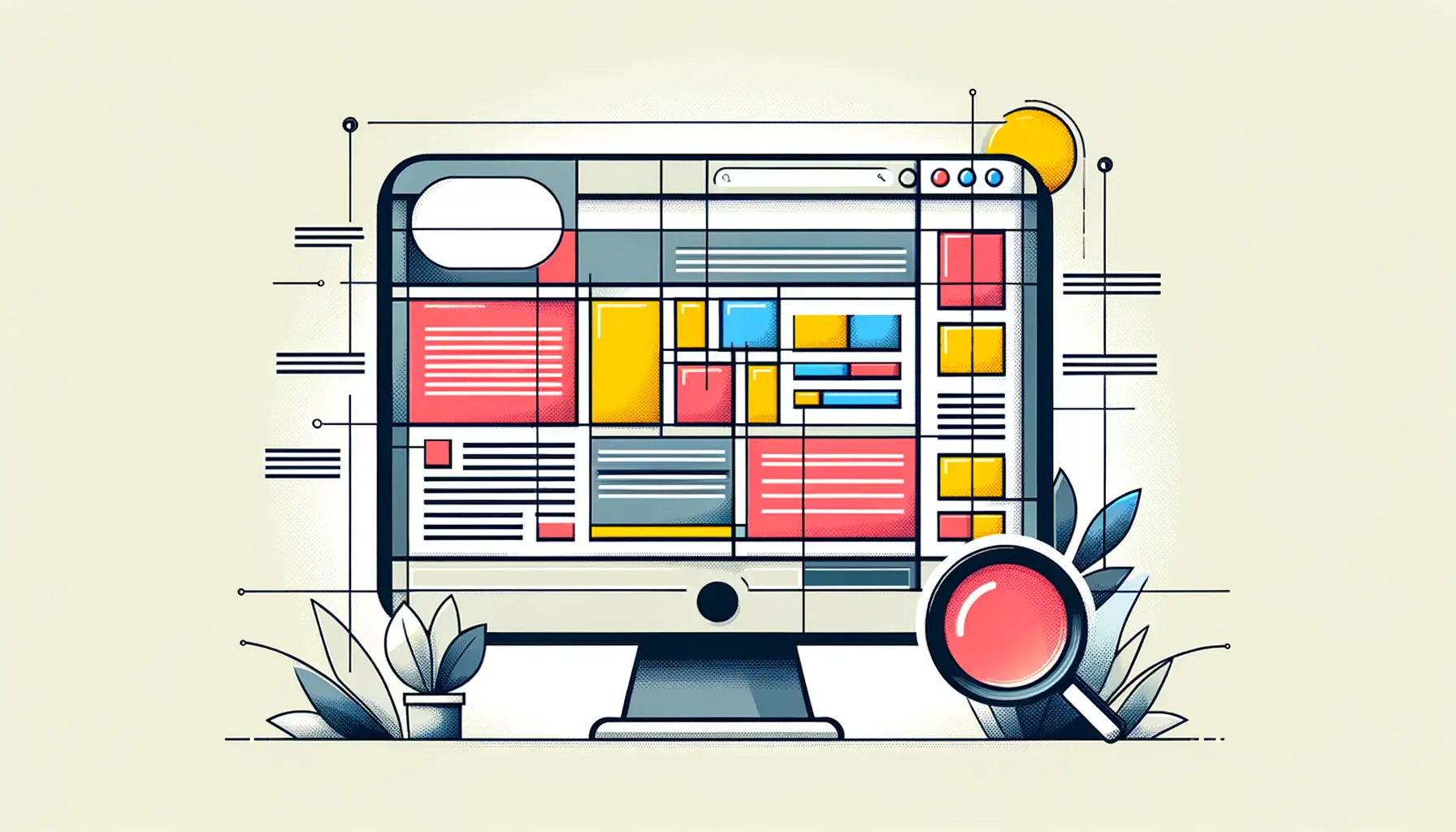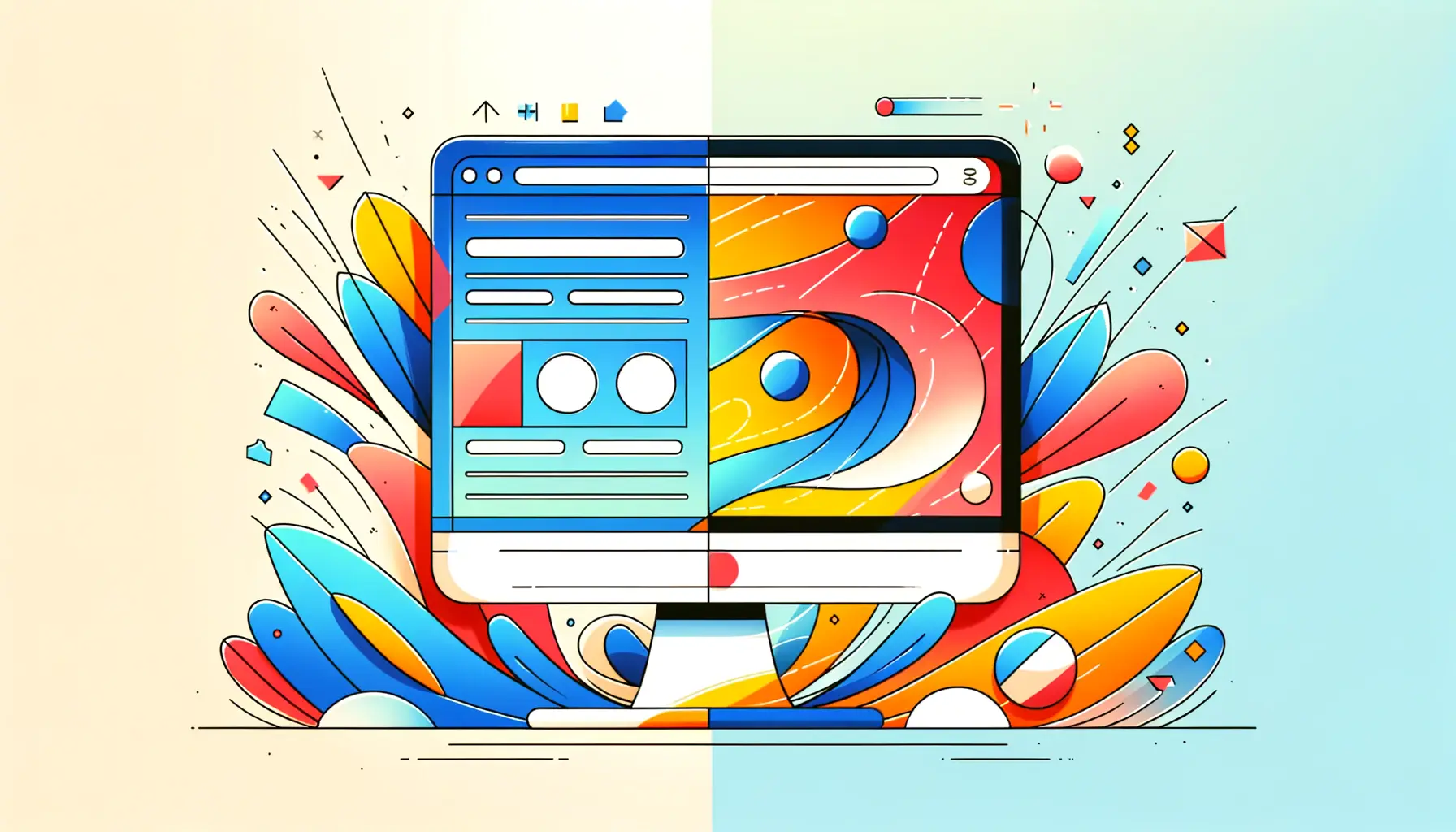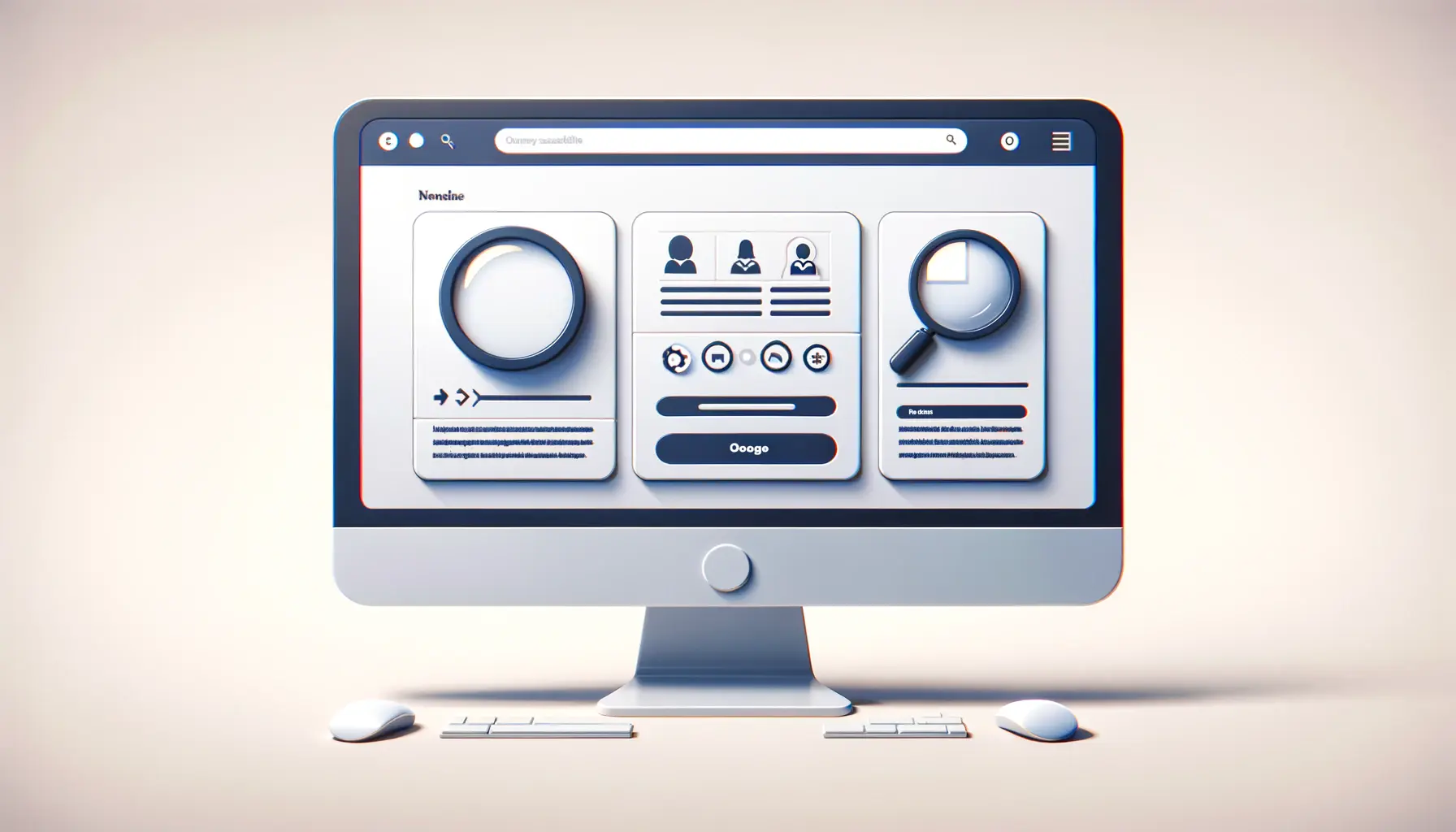Web accessibility is a critical aspect of the digital world, ensuring that websites and online platforms are usable by everyone, including people with disabilities.
Among the various techniques and standards developed to improve web accessibility, Accessible Rich Internet Applications (ARIA) labels stand out as a powerful tool.
ARIA labels are designed to provide users of assistive technologies, such as screen readers, with the necessary context to understand and interact with web content effectively.
The importance of ARIA in web accessibility cannot be overstated.
By enabling developers to describe the function and purpose of web elements in a way that assistive technologies can understand, ARIA labels bridge the gap between dynamic, rich content and the diverse needs of users with disabilities.
This ensures that the web remains an inclusive space, fostering equal opportunities for information access and interaction for all users, regardless of their physical or cognitive abilities.
- Understanding ARIA and Its Impact on Accessibility
- The Role of ARIA in Dynamic Content Accessibility
- Best Practices for Implementing ARIA in Web Development
- ARIA Labels and SEO: Enhancing Discoverability
- Challenges and Solutions in ARIA Implementation
- ARIA in Web Development Frameworks and Libraries
- Future Directions of ARIA in Web Accessibility
- Conclusion: The Integral Role of ARIA Labels in Web Accessibility
- FAQs on ARIA Labels and Web Accessibility
Understanding ARIA and Its Impact on Accessibility
What Are ARIA Labels?
ARIA labels are part of the ARIA specification, which provides a framework for making web content and applications more accessible to people with disabilities.
These labels allow developers to assign descriptive text to web elements, particularly those that do not contain text themselves, such as icons or interactive elements without visible labels.
By doing so, ARIA labels make it possible for screen readers and other assistive technologies to convey these elements’ purpose to users, enhancing the overall usability of the web for individuals with visual impairments or cognitive disabilities.
The use of ARIA labels is particularly crucial in complex web applications that rely heavily on JavaScript for dynamic content generation and user interaction.
In such environments, traditional HTML elements may not adequately convey the role, state, or value of interactive components, leading to confusion and accessibility barriers for users relying on assistive technologies.
ARIA labels address these challenges by providing a means to explicitly describe the functionality of these components.
Enhancing User Experience with ARIA
Implementing ARIA labels can significantly enhance the user experience for people using assistive technologies.
For instance, a button displayed as an icon (such as a search magnifying glass) can be made accessible by using an ARIA label to describe its function (“Search”).
This ensures that users who cannot see the icon can still understand its purpose and interact with it as intended.
Similarly, form elements without visible labels can be made accessible by using ARIA labels to describe their function, ensuring that users can navigate and complete forms independently.
Moreover, ARIA labels play a vital role in making web navigation more intuitive and efficient.
By labeling navigation landmarks (such as headers, footers, and navigation menus) with ARIA, developers can help users of assistive technologies quickly understand the layout of a page and move to the desired content with ease.
This not only improves accessibility but also enhances the overall user experience, making websites more navigable and user-friendly for everyone.
ARIA labels are a cornerstone of web accessibility, enabling developers to create more inclusive and navigable websites for users with disabilities.
The Role of ARIA in Dynamic Content Accessibility
Dynamic web content, which changes without the page itself reloading, presents unique challenges for accessibility.
Traditional HTML elements may fall short in conveying changes to users who rely on assistive technologies.
ARIA labels and roles address these challenges by providing a mechanism to announce updates and changes in the content dynamically, ensuring that all users can stay informed about the evolving state of web applications.
ARIA’s role in enhancing the accessibility of dynamic content includes several key aspects:
- Live Regions: ARIA live regions are used to mark areas of the page that update dynamically. By assigning appropriate roles and properties, developers can control how and when these updates are announced to users, ensuring that the information is conveyed at the right time without overwhelming the user.
- Role Attribute: The ARIA “role” attribute specifies the role of an element in the web application, such as “button”, “menu”, or “dialog”. This helps assistive technologies understand the purpose of the element and how it should be interacted with.
- State and Property Attributes: ARIA states and properties describe the current state of an element (e.g., “expanded” or “checked”) and its properties (e.g., “required” or “invalid”). These attributes are essential for conveying the dynamic aspects of interactive components to users.
Improving Form Accessibility with ARIA
Forms are a critical part of many web applications, from search engines to e-commerce sites.
Ensuring that forms are accessible is crucial for allowing users with disabilities to interact with web content fully.
ARIA labels and roles can be used to enhance the accessibility of form elements in several ways:
- Labeling Input Elements: ARIA labels can provide accessible names for input elements, especially when visual labels are absent or insufficient. This is particularly useful for screen reader users who rely on these labels to understand the purpose of each input field.
- Describing Form Controls: ARIA roles and properties can be used to describe the role of form controls (e.g., “slider” or “combobox”) and their current state (e.g., “required” or “disabled”), providing users with the information needed to interact with the form effectively.
- Error Identification: ARIA can also be used to identify and describe form validation errors, helping users understand what corrections are needed to submit a form successfully.
Incorporating ARIA into forms not only enhances accessibility but also contributes to a more intuitive and user-friendly form interaction experience for all users.
Best Practices for Implementing ARIA in Web Development
While ARIA labels and roles offer powerful tools for enhancing web accessibility, their effectiveness depends on proper implementation.
Adhering to best practices in ARIA usage is essential for ensuring that web content is truly accessible to all users, including those with disabilities.
Here are some key guidelines for web developers looking to implement ARIA in their projects:
- Use Native HTML Elements When Possible: Before resorting to ARIA, consider whether a native HTML element can achieve the desired accessibility outcome. Native elements like
<button>and<input>come with built-in accessibility features that ARIA aims to replicate for more complex scenarios. - Provide Clear and Concise ARIA Labels: ARIA labels should be descriptive yet succinct, providing just enough information for users to understand the purpose of an element without overwhelming them with details.
- Keep Dynamic Content Updates User-Friendly: When using ARIA to announce updates in dynamic content, ensure that the announcements are timely and non-disruptive. Avoid frequent or repetitive updates that could distract or confuse users.
Testing and Validation
Testing is a critical part of developing accessible web content.
Developers should use a combination of automated tools and manual testing to validate the accessibility of their web applications.
Tools like WAVE, Axe, and Lighthouse can identify technical ARIA implementation issues, while manual testing with screen readers and other assistive technologies provides insight into the user experience.
- Automated Accessibility Testing: Automated tools can scan web pages for common accessibility issues, including incorrect ARIA usage, missing labels, and inadequate role assignments.
- Manual Testing with Assistive Technologies: Manual testing involves navigating the web application using screen readers, keyboard-only navigation, and other assistive technologies to ensure that all content is accessible and usable.
Continuous Learning and Improvement
Web accessibility standards and best practices are continually evolving.
Developers should stay informed about the latest developments in web accessibility and ARIA specifications.
Participating in web accessibility forums, attending workshops, and following accessibility blogs are excellent ways to keep up with new techniques and tools for improving web accessibility.
Furthermore, feedback from users with disabilities can provide valuable insights into the accessibility and usability of web applications.
Engaging with the community and incorporating user feedback into development processes can lead to more inclusive and accessible web experiences.
Remember, the goal of implementing ARIA is to enhance accessibility without compromising the usability and functionality of the web application for all users.
ARIA Labels and SEO: Enhancing Discoverability
While the primary goal of ARIA labels is to improve web accessibility, their implementation can also have a positive impact on a website’s search engine optimization (SEO).
Search engines aim to provide users with the most relevant and accessible content.
By making your web content more accessible through the use of ARIA labels, you’re also enhancing its potential discoverability in search engine results.
Search engines like Google increasingly consider user experience factors, including accessibility, when ranking websites.
Well-implemented ARIA labels contribute to a better user experience by making web content more navigable and understandable, particularly for users with disabilities.
This alignment with the core principles of SEO—providing valuable, user-friendly content—means that ARIA labels can indirectly support your SEO efforts.
ARIA’s Role in Structured Data and Rich Snippets
Structured data is a standardized format for providing information about a page and classifying the page content.
While ARIA labels themselves are not a direct part of structured data, the clarity and context they provide can enhance the effectiveness of structured data on your website.
By making web elements more accessible and descriptive, ARIA labels ensure that the structured data you provide is based on content that is accurately represented and accessible to all users, including those using assistive technologies.
This improved accessibility and clarity can enhance the quality of rich snippets displayed in search results.
Rich snippets—enhanced search results that include additional information about the content of a page—rely on structured data.
By ensuring that your web content is accessible and well-described through ARIA, you’re also ensuring that the structured data you provide for SEO purposes is as effective as possible.
Incorporating ARIA into SEO Strategies
Incorporating ARIA labels into your SEO strategy involves more than just implementing the labels themselves.
It requires a holistic approach to web development and content creation that prioritizes accessibility alongside other SEO considerations.
Here are some tips for integrating ARIA into your SEO efforts:
- Conduct Accessibility Audits: Regularly audit your website for accessibility issues, including improper or missing ARIA labels, to ensure that your site remains accessible and SEO-friendly.
- Optimize Content for All Users: Create content that is accessible and valuable to all users, including those with disabilities. Use ARIA labels to enhance the accessibility of non-text content and interactive elements.
- Collaborate with SEO and Accessibility Experts: Work with SEO specialists who understand the importance of accessibility and can help integrate ARIA labels and other accessibility features into your overall SEO strategy.
Effective use of ARIA labels not only supports web accessibility but also contributes to a more inclusive and discoverable internet for everyone.
Challenges and Solutions in ARIA Implementation
Implementing ARIA labels and roles effectively presents several challenges for web developers and designers.
These challenges often stem from a lack of understanding of ARIA’s complexities and the nuances of assistive technologies.
However, with the right approach and resources, these challenges can be overcome to create more accessible and inclusive web experiences.
One common challenge is ensuring that ARIA labels are used appropriately and do not interfere with the natural accessibility features of native HTML elements.
Misuse of ARIA can lead to confusion for users of assistive technologies and may even reduce the overall accessibility of a website.
To address this, developers should prioritize the use of semantic HTML and reserve ARIA for situations where native HTML cannot achieve the desired level of accessibility.
Overcoming Misuse of ARIA
To mitigate the misuse of ARIA, developers should adhere to the following guidelines:
- Education and Training: Invest in accessibility training for your development team. Understanding the principles of web accessibility and the proper use of ARIA is crucial for effective implementation.
- Use ARIA Sparingly: Apply ARIA labels and roles only when necessary. Overuse of ARIA can lead to unnecessary complexity and potential accessibility issues.
- Testing with Assistive Technologies: Regularly test your web content with various assistive technologies to ensure that ARIA implementations are effective and do not hinder the user experience.
Keeping Up with ARIA Best Practices
Web accessibility standards, including ARIA, are continually evolving.
Staying informed about the latest best practices and guidelines is essential for maintaining accessible web content.
Developers can stay up-to-date by following accessibility blogs, participating in forums, and attending conferences dedicated to web accessibility.
Additionally, leveraging community resources and tools can help developers navigate the complexities of ARIA implementation.
Online forums and social media groups focused on web accessibility provide platforms for sharing experiences, asking questions, and learning from others in the field.
Accessibility testing tools and validators also offer valuable feedback on ARIA usage and help identify areas for improvement.
Assuming that ARIA alone can make a website accessible is a common misconception. ARIA should be part of a broader accessibility strategy that includes semantic HTML, proper keyboard navigation, and accessible design.
ARIA in Web Development Frameworks and Libraries
Modern web development increasingly relies on frameworks and libraries to streamline the creation of complex, interactive web applications.
These tools offer powerful features and components, but integrating accessibility, particularly ARIA, can sometimes be overlooked in the rush to develop.
Recognizing the importance of ARIA in these environments is crucial for ensuring that web applications are accessible to all users, including those with disabilities.
Frameworks such as React, Angular, and Vue have their own approaches to handling DOM elements and dynamic content, which can impact how ARIA labels and roles are implemented.
Fortunately, these frameworks provide support for ARIA, allowing developers to incorporate accessibility features directly into their components.
Integrating ARIA with React
React encourages the use of JSX, which closely resembles HTML.
This similarity allows developers to directly include ARIA attributes in their JSX code, just as they would in HTML.
React’s component-based architecture also means that reusable components can be designed with accessibility in mind, incorporating ARIA labels and roles as part of the component’s properties.
This approach ensures that accessibility considerations are embedded in the development process from the start.
Enhancing Accessibility in Angular Applications
Angular provides a robust platform for developing dynamic web applications, and its template syntax supports the inclusion of ARIA attributes directly within HTML templates.
Angular’s binding syntax makes it easy to dynamically assign ARIA labels and roles based on component logic, allowing for more flexible and context-aware accessibility enhancements.
Additionally, Angular’s focus on TypeScript offers type safety for ARIA attributes, reducing the risk of errors that could compromise accessibility.
Vue.js and ARIA: A Practical Approach
Vue.js, known for its simplicity and flexibility, also supports ARIA attributes in its template syntax.
Vue’s reactivity system allows developers to dynamically update ARIA attributes in response to application state changes, ensuring that accessibility information remains accurate as the user interacts with the application.
By leveraging Vue’s directives and component properties, developers can easily integrate ARIA into their web applications, making them more accessible to users with disabilities.
Frameworks and libraries play a significant role in modern web development, and their support for ARIA is essential for creating accessible web applications. By leveraging these tools, developers can ensure that their applications meet web accessibility standards, providing an inclusive experience for all users.
Future Directions of ARIA in Web Accessibility
The evolution of web technologies and digital accessibility standards is a continuous process, with ARIA playing a pivotal role in shaping the future landscape of web accessibility.
As we look forward, the integration of ARIA into emerging web technologies, the development of new ARIA specifications, and the increasing emphasis on inclusive design practices herald a more accessible future for the web.
Emerging web technologies such as Web Components and the ever-expanding Internet of Things (IoT) present new challenges and opportunities for web accessibility.
ARIA’s role in these technologies will be crucial for ensuring that new forms of web content and interactions remain accessible to all users, including those with disabilities.
- Expansion of ARIA Specifications: The W3C Web Accessibility Initiative (WAI) continues to evolve ARIA standards to address the changing needs of the web and its users. Future versions of ARIA are expected to introduce new roles, properties, and states that cater to emerging web patterns and components, further enhancing the toolkit available to developers for creating accessible web content.
- Inclusive Design Practices: There is a growing recognition of the importance of inclusive design as a fundamental aspect of the web development process. ARIA will play a key role in supporting these practices by providing the means to create web applications that are usable by everyone, regardless of their abilities or disabilities.
- Education and Advocacy: As the web becomes increasingly integral to daily life, the importance of web accessibility cannot be overstated. Efforts to educate web professionals about ARIA and accessibility best practices will be critical for ensuring that future web developments are accessible by design.
The future of ARIA in web accessibility is not just about technical advancements but also about fostering a culture of inclusivity among web developers, designers, and content creators.
By integrating accessibility considerations into the earliest stages of web development and embracing the principles of inclusive design, the web community can ensure that the digital world remains open and accessible to everyone.
- Collaboration and Community: The development of accessible web technologies is a collaborative effort that involves developers, designers, accessibility experts, and users with disabilities. Engaging with the broader web accessibility community through forums, social media, and conferences will continue to be vital for sharing knowledge, discussing challenges, and developing innovative solutions.
- Adoption of Accessibility Standards: The widespread adoption of web accessibility standards, including ARIA, by organizations and businesses is essential for creating an inclusive digital environment. Advocacy and legislation will play key roles in encouraging the adoption of these standards across the web.
The future of ARIA and web accessibility is bright, with ongoing developments aimed at making the web a more inclusive space for everyone. By staying informed, engaged, and committed to accessibility, the web community can look forward to a future where digital experiences are universally accessible and enjoyable.
Conclusion: The Integral Role of ARIA Labels in Web Accessibility
The journey through the intricacies of Accessible Rich Internet Applications (ARIA) labels underscores their indispensable role in enhancing web accessibility.
As digital platforms become increasingly central to our daily lives, the imperative to create inclusive and accessible web experiences for all users, including those with disabilities, has never been more critical.
ARIA labels emerge not just as a tool but as a beacon guiding the way towards a more accessible internet.
Empowering Web Inclusivity
ARIA labels serve as the cornerstone for building web environments that are navigable, understandable, and usable for people with a wide range of disabilities.
By providing descriptive labels for interactive elements, forms, and dynamic content, ARIA empowers users with disabilities to interact with web content in meaningful ways.
This empowerment is a testament to the web’s potential as a universally accessible resource, free from the barriers that once limited the participation of individuals with disabilities.
Challenges, Solutions, and Future Directions
The implementation of ARIA, while transformative, is not without its challenges.
From the complexities of dynamic content accessibility to the nuances of integrating ARIA with modern web development frameworks, developers face a myriad of considerations in their quest to enhance accessibility.
However, the solutions are as dynamic as the challenges themselves, involving continuous learning, adherence to best practices, and leveraging the support of the web development community.
- The evolution of ARIA specifications to address emerging web technologies and patterns.
- The growing emphasis on inclusive design practices that integrate accessibility considerations from the ground up.
- The critical role of education and advocacy in promoting the adoption of web accessibility standards.
Looking ahead, the future of ARIA and web accessibility is bright, marked by advancements in technology, standards, and community engagement.
As ARIA labels continue to evolve, so too will the opportunities for creating web experiences that are truly inclusive.
This evolution will require the collective effort of developers, designers, accessibility experts, and users, all working together towards the common goal of an accessible web for everyone.
Final Thoughts
In conclusion, the role of ARIA labels in enhancing web accessibility cannot be overstated.
They are a vital component of the web developer’s toolkit, enabling the creation of digital experiences that are accessible to all.
As we move forward, the continued focus on ARIA, coupled with a commitment to inclusive design and accessibility best practices, will ensure that the web remains a space where everyone, regardless of ability, can participate fully and freely.
The journey towards a more accessible web is ongoing, and ARIA labels are leading the way.
Quality web design is key for a great website! Check out our service page to partner with an expert web design agency.
FAQs on ARIA Labels and Web Accessibility
Explore commonly asked questions about ARIA labels and their crucial role in enhancing web accessibility for all users.
An ARIA label provides an accessible name for interactive elements when no visible text is available, enhancing usability for assistive technology users.
ARIA labels make web content more accessible by describing the function of elements, aiding users with disabilities in navigating and interacting with websites.
Use ARIA labels for interactive elements lacking visible descriptive text, ensuring these elements are accessible to assistive technology users.
While primarily for accessibility, ARIA labels can indirectly benefit SEO by enhancing the user experience, a factor considered by search engines.
ARIA labels provide accessibility enhancements for elements without native labeling options, complementing HTML labels by offering additional context.
Not all elements require ARIA labels; they’re most beneficial for content that lacks sufficient textual description for assistive technologies.
Implement ARIA labels by accurately describing the element’s purpose without redundancy, ensuring compatibility with assistive technologies.
Common mistakes include overusing ARIA labels when native HTML suffices and providing vague or inaccurate descriptions, reducing accessibility effectiveness.











